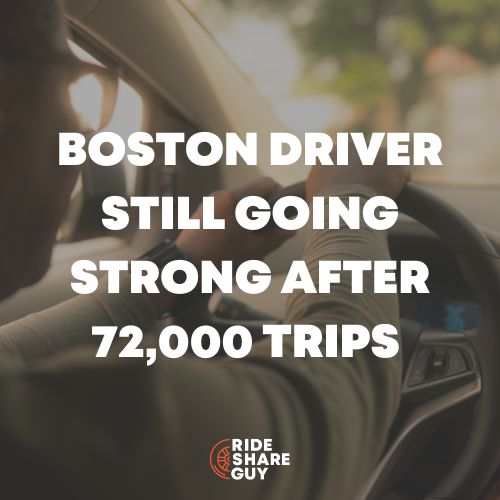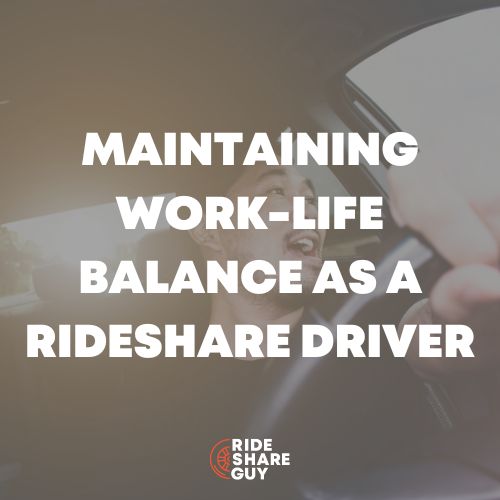Ever since I started driving for Uber and Lyft in December 2015, I have heard the story about how self-driving cars would replace rideshare drivers.
As the story goes, this is how Uber and Lyft will ultimately turn a profit. If they can eliminate the expense of drivers, their profit margin should significantly increase.
Now seven years later, I began to wonder if and when self-driving cars will take over my weekend driving gig. With the rapid advancements in autonomous vehicle technology, the question of when self-driving cars will replace human rideshare drivers has become a topic of great interest.
This article aims to explore the various factors influencing the timeline for this transition and provide a rough prediction regarding the year in which self-driving cars are likely to replace rideshare drivers.
Background
To understand the potential timeline for replacing rideshare drivers with self-driving cars, it is crucial to assess the current state of autonomous vehicle technology.
While considerable progress has been made, fully autonomous vehicles capable of navigating complex urban environments with various variables still face significant challenges.
While companies like Waymo, Tesla, and Uber are actively testing and developing self-driving cars, regulatory hurdles, technological limitations, and public acceptance remain important factors to consider.

Hurdles to Replacing Rideshare Drivers
#1. Regulatory and Legal Challenges
The first major hurdle is how do you make self-driving cars legal. Who will oversee the safety concerns? What happens when one of those self-driving Uber cars runs over a pedestrian crossing the street?
Before self-driving cars are given the green light, governments and regulatory bodies need to establish comprehensive guidelines and standards to ensure the safe operation of autonomous vehicles.
Moreover, liability and insurance issues must be addressed to protect the interests of all stakeholders. Overcoming these challenges will require close collaboration between technology companies, government agencies, and policymakers.
Clearly, there is much to do in this arena to clear the way for self-driving cars.
#2. Technological Limitations
No one will jump into a self-driving car until they know it is safe. We have all read and heard stories about autonomous vehicles hitting pedestrians. The technology is not there yet.
The development of self-driving cars requires overcoming several technological hurdles. Autonomous vehicles must be equipped with advanced sensors like Lidar, radar, and cameras to accurately perceive and interpret the surrounding environment.
Additionally, artificial intelligence (AI) algorithms must be refined to make real-time decisions, respond to unexpected events, and navigate complex traffic scenarios. While significant progress has been made, refining and perfecting these technologies will take time and extensive testing.
#3. Public Acceptance and Trust
This is the biggest issue I foresee for self-driving cars. Can I trust them? Not now.
How long will it take for the public to feel safe and accept the technology? Airplanes crash.
We all still jump on an airplane without a thought or fear of crashing. However, cars feel much more visceral. We have all driven by a crash and seen the damage up close. It will take more convincing for John Q Public to believe in self-driving cars.
Public acceptance and trust are paramount for self-driving cars to replace rideshare drivers. Convincing the general public that autonomous vehicles are safe, reliable, and capable of handling various scenarios is crucial.
Education campaigns, public demonstrations, and increased transparency about safety measures can help build public trust. However, changing public attitudes towards self-driving cars may take considerable time and effort, particularly considering the inherent skepticism and fear surrounding new technologies.

#4. Putting People Out Of Jobs
Social friction will be created by the idea of putting millions of drivers out of work. This could become a very political issue. It is hard to gauge how much people’s feelings about the American worker will slow down the impending transition to self-driving cars.
We are putting millions of Americans out of work by sending production tasks to oversea factories. No one seems too worried about that. iPhones are made in China. We drive luxury cars made in Germany.
As technology makes the world smaller, the transition of jobs becomes more accepted. However, replacing human drivers with machines will still pose a challenge to be addressed.
When Will It Happen?
Based on everything I have read, I think we are seven to ten years away from truly self-driving cars. Given the complexity of the factors involved, accurately predicting the year when self-driving cars will replace rideshare drivers is challenging.
However, based on the current trajectory and assuming significant progress continues to be made, it is reasonable to estimate that widespread adoption of autonomous ridesharing services could occur within the next decade.
By the year 2030, self-driving cars could “potentially” dominate the rideshare industry in select cities with favorable regulatory environments and well-mapped infrastructure.
But, all it will take is several good car crashes, and the public trust may fade and need time to rebuild.

Key Takeaways
While it is difficult to pinpoint an exact year for the complete replacement of rideshare drivers by self-driving cars, the ongoing development of autonomous vehicle technology suggests that significant strides are being made toward this future.
Overcoming regulatory challenges, addressing technological limitations, building public trust, overcoming social friction, and resolving legal and insurance concerns are key prerequisites for a successful transition.
While predictions can be speculative, it is plausible that by the year 2030, self-driving cars may become the dominant force in the rideshare industry, revolutionizing urban transportation and reshaping the way we commute.
It is still a long way off. We all have time to plan ahead.
My take is there will always be a substantial demand for rideshare drivers. Many passengers will prefer the human experience. I will. I want someone I can talk to, even if I have to pay a few extra bucks. How about you? Be safe out there.




